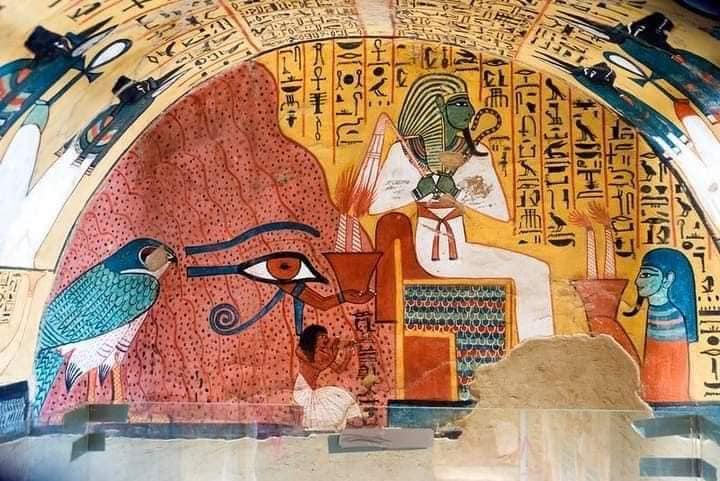Egypt Magic
Pyramid of Meidum
The pyramid of Meidum was built during the Old Kingdom during King Senefru of the Fourth Dynasty in Meidum (2620 BC); It now shows three terraces, and it was the fifth-largest pyramid of Egypt when it was built. It seems that this pyramid was not intended to be a tomb for Senefru but rather to be a cemetery or a false pyramid.
The first phase of construction was identical to building the stepped pyramid that was followed during the Third Dynasty. It consists of layers of limestone inclined inward at an angle of 75 ° from neighbouring quarries, covered outside by a cover of flat-surface stones of white limestone.
During the first phase, the side of the pyramid was 105 meters to be completed by seven mastabas, reaching a height of 71 meters. After the completion of the fourth or fifth floor, the design of the building was changed according to the second stage.
Up to that point, the mummy room had been built at the heart of the pyramid instead of being underground, as was customary with the step pyramid.
The second stage by raising the pyramid to eight terraces. For this, a cover was built inclined to the pyramid, tilted at an angle of 75 degrees, which expanded the sides of the pyramid’s base to 120 meters to reach a height of 85 meters. The coverage during the first phase was still in place, and the expansion process began outside of it. After completing the second stage, it was also covered with flat packing stones. The completion of that stage was during the 14th year of the reign of Senefru and Anada. The pyramid of Senefru was the second pyramid in height in the Maqara with the pyramid of Djoser, which had been established before it.
The development of the pyramid construction from a step pyramid to a complete pyramid began during the 28 or 29 years of the Senefru era. This dating is based on the writings of workers on building stones.
Given the stacking of the pyramid stones during that stage horizontally, as was followed in the last stages of building the tilted pyramid, this technique was also followed with the red pyramid. Covering the pyramid that was completed in the second stage had been completed, and it began to be surrounded by a third cover after the expansion process. The third stage was also covered with white limestone from the quarries of Tora, located on the eastern bank of the Nile. This is what we find today under the rubble surrounding the pyramid.


Comment (0)